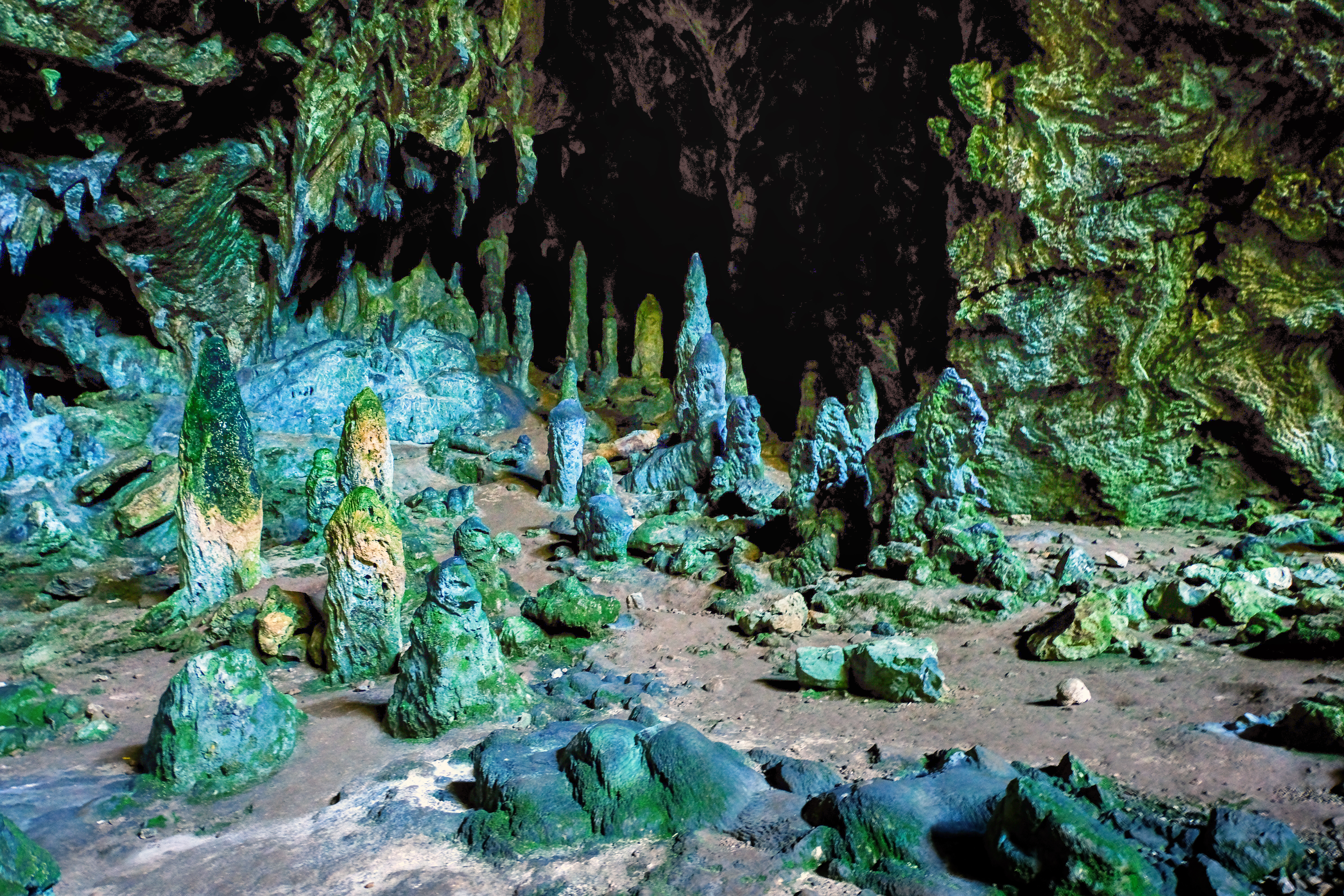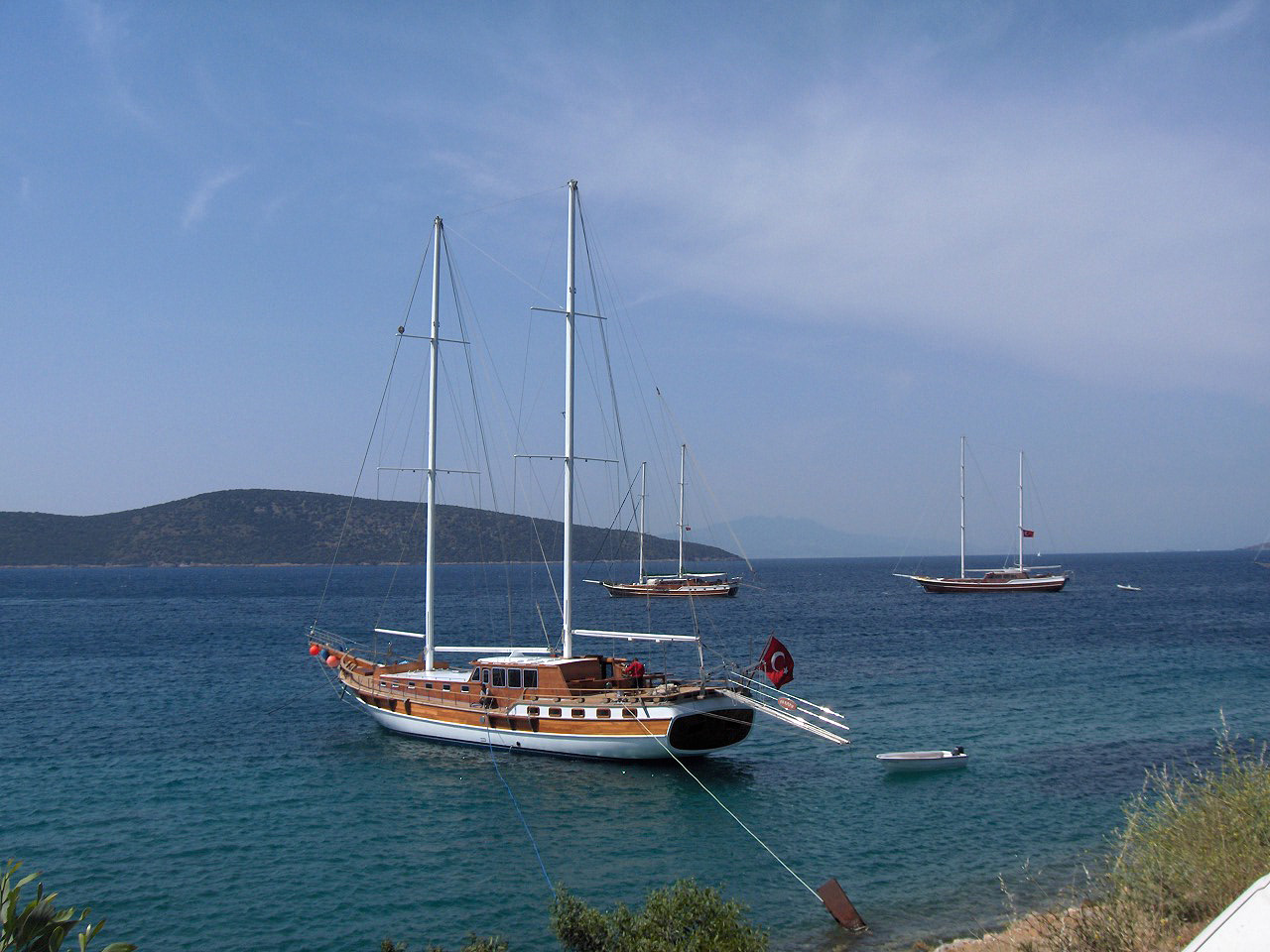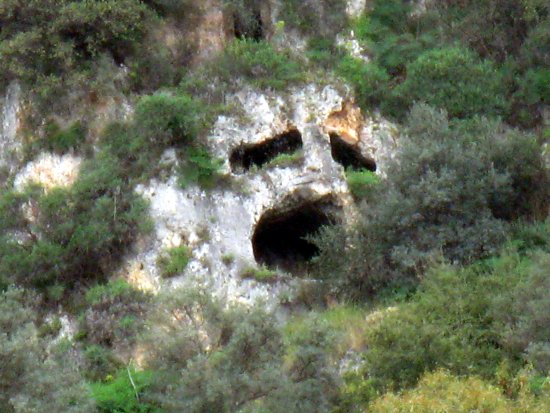|
Mavi Yolculuk
A Blue Cruise, also known as a ''Blue Voyage'' () or ''Blue Tour'' (), is a term used for recreational voyages along the Turkish Riviera, on Turkey's southwestern coast along the Aegean and Mediterranean seas. The cruise is typically a week-long trip aboard the local gulet schooners, to ancient cities, harbors, tombs, and beaches in the numerous small coves along the country's Turquoise Coast. ''Carian Cruise'' is a lesser-known synonym used by some sources internationally, in reference to the term Caria — the name this region of southwest Turkey was called in ancient times. History The term ''Blue Voyage'', which is used in Turkey's tourism industry, has its origins in Turkish literature, deriving from the title of a book by Azra Erhat, and was first introduced into Turkish literature by a handful of writers, such as Cevat Şakir Kabaağaçlı (alias ''The Fisherman of Halicarnassus''). The author, who had been exiled to Bodrum in 1925, began taking trips with his frie ... [...More Info...] [...Related Items...] OR: [Wikipedia] [Google] [Baidu] |
Marmaris
Marmaris () is a port city and tourist resort on the Mediterranean coast, located in Muğla Province, southwest Turkey, along the shoreline of the Turkish Riviera. Although Marmaris is known for its honey, its main source of income is international tourism. It is located between two intersecting sets of mountains by the sea, though following a construction boom in the 1980s, little is left of the sleepy fishing village that Marmaris was until the late 20th century. In 2010, the city's resident population was 30,957, although it peaks at around 300,000 to 400,000 people during the tourist season. As an adjunct to the tourism industry, Marmaris is also a centre for sailing and diving, possessing two major and several smaller marinas. It is a popular wintering location for hundreds of cruising boaters. Dalaman Airport is an hour's drive to the east. Ferries operate from Marmaris to Rhodes and Symi in Greece. Etymology During the period of the Beylik of Menteşe; the city became ... [...More Info...] [...Related Items...] OR: [Wikipedia] [Google] [Baidu] |
Gulet
A ''gulet'' () is a traditional design of a two-masted or three-masted wooden sailing vessel (the most common design has two masts) from the southwestern coast of Turkey, particularly built in the coastal towns of Bodrum and Marmaris; although similar vessels can be found all around the eastern Mediterranean. Today, this type of vessel, varying in size from 14 to 35 metres, is popular for tourist charters. For considerations of crew economy, diesel power is now almost universally used and many are not properly rigged for sailing. History There are differing opinions about the history and etymology of ''gullet'' which took the Turkish name "gulet" from the Italian word ''goletta''. There is still controversy on whether it originated from the schooner, which has long been used as a sweeping net, trawl net or sponging vessel in Turkey in the Aegean and Mediterranean shores, and as a freight vessel in the Black Sea; or it originates from the fishing vessel ''guletta'' (''gouël ... [...More Info...] [...Related Items...] OR: [Wikipedia] [Google] [Baidu] |
Tirhandil
The Tirhandil is the oldest style of vessel on the Aegean Sea. Tirhandils are rarer these days due to their accommodation capacity. Double-ended traditional design allows for only a small number of cabins. Tirhandils sail well and are an attractive vessel with plenty of deck space. Tirhandil carries the most traditional elements of Aegean sailing boats of the last two millenniums. It takes its origins from the Bodrum area, has one or two masts, a bowsprit and lateen sails. It is beak-nosed with a scoop stern and simple interior capacity. Tirhandils have been the workhorses of the Mediterranean for the last two thousand years and is similar to its cousin, the caique, and the Greek transport vessel called perama. The Greek equivalent of tirhandil is trechenderi. See also * Marinas in Turkey * Tourism in Turkey * Blue Cruise * Gulet A ''gulet'' () is a traditional design of a two-masted or three-masted wooden sailing vessel (the most common design has two masts) from the sout ... [...More Info...] [...Related Items...] OR: [Wikipedia] [Google] [Baidu] |
Marinas In Turkey
Marinas in Turkey, ports of call for international and local yachtsmen, are equipped with modern services routinely expected in recreational boating industry. They are found either in or near Istanbul or İzmir, the two largest port cities of the country whose economies are focused on tourism in the Aegean Sea or the Mediterranean Sea, with a particular concentration in southwest Anatolia. The country's increasing popularity in nautical tourism is advantaged by its coastline and a past noted for the seafaring literature, some of whose references are part of everyday culture, as is the case for the Blue Cruise, and the search for the Golden Fleece. It is noteworthy to recall that, apart from the larger installations listed below, there are also numerous points of stop and supply which offer the advantages inherent to smaller enterprises, sometimes in a family environment, at the same time as putting the geography of the Turkish coasts to good use. Since recent years , these inst ... [...More Info...] [...Related Items...] OR: [Wikipedia] [Google] [Baidu] |
Greek Islands
Greece has many islands, with estimates ranging from somewhere around 1,200 to 6,000, depending on the minimum size to take into account. The number of inhabited islands is variously cited as between 166 and 227. The largest Greek island by area is Crete, located at the southern edge of the Aegean Sea. The second largest island is Euboea or Evvia, which is separated from the mainland by the 60m-wide Euripus Strait, and is administered as part of the Central Greece region. After the third and fourth largest Greek islands, Lesbos and Rhodes, the rest of the islands are two-thirds of the area of Rhodes, or smaller. The Greek islands are traditionally grouped into the following clusters: the Argo-Saronic Islands in the Saronic Gulf near Athens; the Cyclades, a large but dense collection occupying the central part of the Aegean Sea; the North Aegean islands, a loose grouping off the west coast of Turkey; the Dodecanese, another loose collection in the southeast between Crete and T ... [...More Info...] [...Related Items...] OR: [Wikipedia] [Google] [Baidu] |
Greece
Greece,, or , romanized: ', officially the Hellenic Republic, is a country in Southeast Europe. It is situated on the southern tip of the Balkans, and is located at the crossroads of Europe, Asia, and Africa. Greece shares land borders with Albania to the northwest, North Macedonia and Bulgaria to the north, and Turkey to the northeast. The Aegean Sea lies to the east of the Geography of Greece, mainland, the Ionian Sea to the west, and the Sea of Crete and the Mediterranean Sea to the south. Greece has the longest coastline on the Mediterranean Basin, featuring List of islands of Greece, thousands of islands. The country consists of nine Geographic regions of Greece, traditional geographic regions, and has a population of approximately 10.4 million. Athens is the nation's capital and List of cities and towns in Greece, largest city, followed by Thessaloniki and Patras. Greece is considered the cradle of Western culture, Western civilization, being the birthplace of Athenian ... [...More Info...] [...Related Items...] OR: [Wikipedia] [Google] [Baidu] |
Kekova
Kekova, also named ''Caravola''Bertarelli (1929), p.134 (Greek: '' Dolichiste''), is a small Turkish island near Demre (Demre is the Lycian town of Myra) district of Antalya province which faces the villages of Kaleköy (ancient Simena) and Üçağız (ancient Teimioussa). Kekova has an area of and is uninhabited. Island After the Italian occupation of Kastelorizo, Kekova — which at that time was temporarily inhabited during summer because of wood harvest — was disputed between Italy and Turkey. The 1932 Convention between Italy and Turkey assigned it to Turkey. On its northern side there are the partly sunken ruins of ''Dolchiste/Dolikisthe'', an ancient town which was destroyed by an earthquake during the 2nd century. Rebuilt and still flourishing during the Byzantine Empire period, it was finally abandoned because of Arab incursions. The ''Tersane'' (meaning "dockyard", as its bay was the site of an ancient city Xera and dockyard, with the ruins of ... [...More Info...] [...Related Items...] OR: [Wikipedia] [Google] [Baidu] |
Gökova
Gökova is a municipality (''belde'') in the district of Ula in Muğla Province, Turkey. It lies at the head of the Gulf of Gökova in a plain also known as Gökova. The ancient Carian city of Idyma, with its acropolis and necropolis, is located above Kozlukuyu Mahallesi (Kozlukuyu Neighbourhood) at the northern end of Gökova town, not at nearby Akyaka as often incorrectly stated. Name and geography The name Gökova means "blue" ''(gök)'' "plain" ''(ova)'' and refers to the plain on which the town of Gökova is situated. Today in the plain of Gökova there are two towns called Gökova and Akyaka, six villages named Ataköy, Akçapinar, Gökçe, Çitlik, Şirinköy and Yeşilova. The population is about 10,000. Gökova town is situated about 2 km inland from the holiday resort of Akyaka. Gökova town is a separate municipality from Akyaka, yet Idyma's acropolis and necropolis are often erroneously attributed to Akyaka. However, there is relatively little of archaeolog ... [...More Info...] [...Related Items...] OR: [Wikipedia] [Google] [Baidu] |
Dalyan
Dalyan is a town in Muğla Province located between the districts of Marmaris and Fethiye on the south-west coast of Turkey. The town is an independent municipality, within the administrative district of Ortaca. Dalyan achieved international fame in 1987 when developers wanted to build a luxury hotel on the nearby İztuzu Beach, a breeding ground for the endangered loggerhead sea turtle species. The incident created major international storm when David Bellamy championed the cause of conservationists such as June Haimoff, Peter Günther, Nergis Yazgan, Lily Venizelos and Keith Corbett. The development project was temporarily stopped after Prince Philip called for a moratorium and in 1988 the beach and its hinterland were declared a protected area, viz. Köyceğiz-Dalyan Special Environmental Protection Area. Life in Dalyan revolves around the Dalyan Çayı River which flows past the town. The boats that ply up and down the river, navigating the maze of reeds, are the preferre ... [...More Info...] [...Related Items...] OR: [Wikipedia] [Google] [Baidu] |
Antalya
Antalya () is the List of largest cities and towns in Turkey, fifth-most populous city in Turkey as well as the capital of Antalya Province. Located on Anatolia's southwest coast bordered by the Taurus Mountains, Antalya is the largest Turkish city on the Mediterranean coast outside the Aegean region with over one million people in its metropolitan area.2011 Census Turkish Statistical Institute (Büyükşehir belediyeleri ve bağlı belediyelerin nüfusları) – 2011 The city that is now Antalya was first settled around 200 BC by the Attalid dynasty of Pergamon, which was soon subdued by the Romans. Roman rule saw Antalya thrive, including the construction of several new monuments, such as Hadrian's Gate, and the proliferation of ne ... [...More Info...] [...Related Items...] OR: [Wikipedia] [Google] [Baidu] |
Fethiye
Fethiye () is a city and district of Muğla Province in the Aegean Region of Turkey. It is one of the prominent tourist destinations in the Turkish Riviera. In 2019 its population was 162,686. History Fethiye was formerly known as Makri (). Modern Fethiye is located on the site of the ancient city of Telmessos, the ruins of which can be seen in the city, e.g. the Hellenistic theatre by the main quay. A Lycian legend explains the source of the name Telmessos as follows: The god Apollo falls in love with the youngest daughter of the King of Phoenicia, Agenor. He disguises himself as a small dog and thus, gains the love of the shy, withdrawn daughter. After he reappears as a handsome man, they have a son, who they name 'Telmessos' (the land of lights). The city became part of the Persian Empire after the invasion of the Persian general Harpagos in 547 BC, along with other Lycian and Carian cities. Telmessos then joined the Attic-Delos Union (Delian League) established in mid-5 ... [...More Info...] [...Related Items...] OR: [Wikipedia] [Google] [Baidu] |








